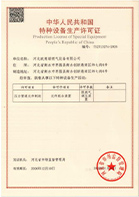
Nov . 20, 2024 12:38
Back to list
صمام تخفيض ضغط الغاز الطبيعي
Understanding Natural Gas Pressure Reduction Valves
Natural gas plays a pivotal role in our daily lives, powering homes, schools, industries, and even vehicles. However, this highly flammable gas must be handled with extreme care to ensure safety and efficiency in its distribution. One crucial component in the operation of natural gas systems is the pressure reduction valve, also known as a pressure regulating valve (PRV). This article aims to shed light on natural gas pressure reduction valves, their importance, how they function, and the critical role they play in the delivery and regulation of natural gas.
Importance of Pressure Regulation
Natural gas is transported at high pressures across pipelines to reach consumers. When it reaches its destination, such as a home or business, it is essential to reduce the pressure to safe, usable levels. If the pressure is not adequately regulated, it can lead to dangerous situations, including leaks, explosions, and damage to appliances designed to operate under lower pressures. Thus, pressure reduction valves are indispensable for ensuring the safe and efficient use of natural gas.
How Pressure Reduction Valves Work
Pressure reduction valves operate on a simple principle they automatically reduce the incoming gas pressure to a set, predetermined level. The basic components of a PRV include an inlet and outlet port, a spring-loaded diaphragm or piston, and a seat or orifice.
When high-pressure gas enters the valve, it acts against the diaphragm or piston. The tension from the spring helps control the position of the valve opening. As the gas pressure pushes the diaphragm, it moves to either open or close the valve seat, allowing gas to flow through at a controlled reduced pressure. This process is continuous, with the valve adjusting automatically to maintain the desired pressure level, despite fluctuations in the incoming gas pressure.
Types of Pressure Reduction Valves
.
1. Single-stage Pressure Regulators These are designed for applications where the pressure difference between the inlet and outlet is relatively low. They reduce pressure in one step.
صمام تخفيض ضغط الغاز الطبيعي

2. Multi-stage Pressure Regulators These are used in situations where there is a significant difference in pressure between the inlet and outlet. They gradually reduce pressure through multiple stages, providing a more stable and controlled output pressure.
3. Electronic Pressure Regulators These advanced systems use electronic sensors and controls to monitor and adjust gas pressure in real-time, offering higher accuracy and responsiveness.
Application of Pressure Reduction Valves
Pressure reduction valves are used in various applications across industries involving natural gas. They can be found in residential settings to regulate gas supply for heating systems, stoves, and other appliances. In commercial and industrial settings, they ensure the safe operation of large-scale machinery and processes that rely on natural gas.
Additionally, these valves are integral to the functioning of gas distribution systems, where they control pressure at various points in the pipeline network, ensuring equal distribution and safety.
Maintenance and Safety Considerations
While pressure reduction valves are designed to be reliable, regular maintenance is crucial to their performance. Operators must conduct routine inspections to ensure that the valves are functioning correctly and that no leaks or wear and tear are present. Any malfunction can pose a significant risk, underscoring the importance of proper maintenance.
Operators must also be trained to recognize the signs of issues, such as fluctuating pressure or unusual noises, which could indicate a malfunctioning valve. Prompt action should be taken to address any problems to maintain safety.
Conclusion
Natural gas pressure reduction valves are essential components in the safe distribution and use of natural gas. By effectively managing the pressure of gas reaching consumers, these valves not only protect equipment and infrastructure but also ensure the safety of users. With advancements in technology, including electronic control systems, the future of pressure regulation in the natural gas industry looks promising, offering even more refined control and safety. As the global demand for natural gas continues to rise, understanding and maintaining these critical components remains a priority for industries relying on this vital energy source.
Next:
Latest news
-
Safety Valve Spring-Loaded Design Overpressure ProtectionNewsJul.25,2025
-
Precision Voltage Regulator AC5 Accuracy Grade PerformanceNewsJul.25,2025
-
Natural Gas Pressure Regulating Skid Industrial Pipeline ApplicationsNewsJul.25,2025
-
Natural Gas Filter Stainless Steel Mesh Element DesignNewsJul.25,2025
-
Gas Pressure Regulator Valve Direct-Acting Spring-Loaded DesignNewsJul.25,2025
-
Decompression Equipment Multi-Stage Heat Exchange System DesignNewsJul.25,2025

